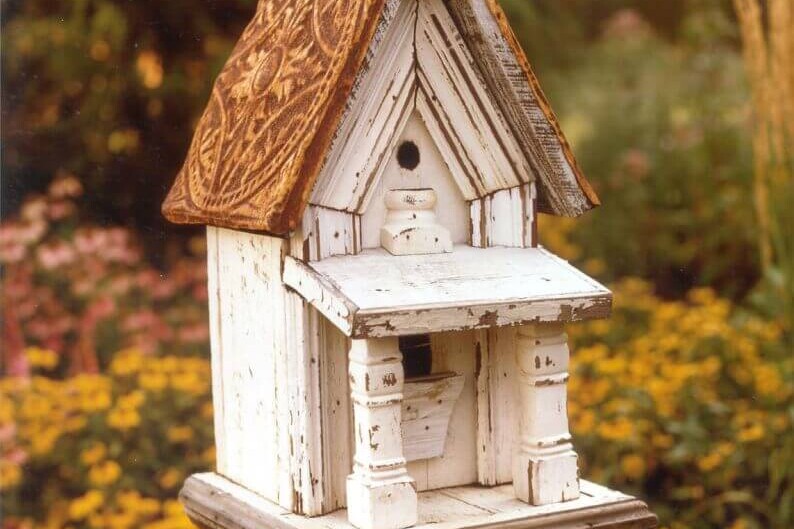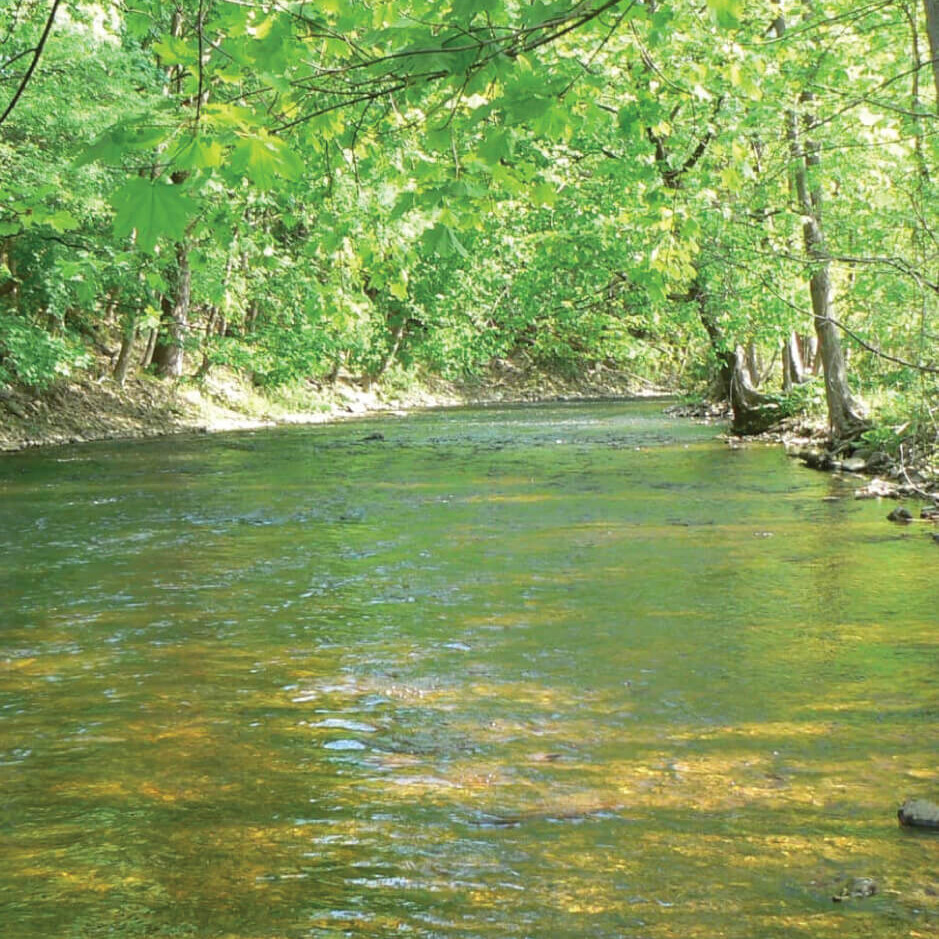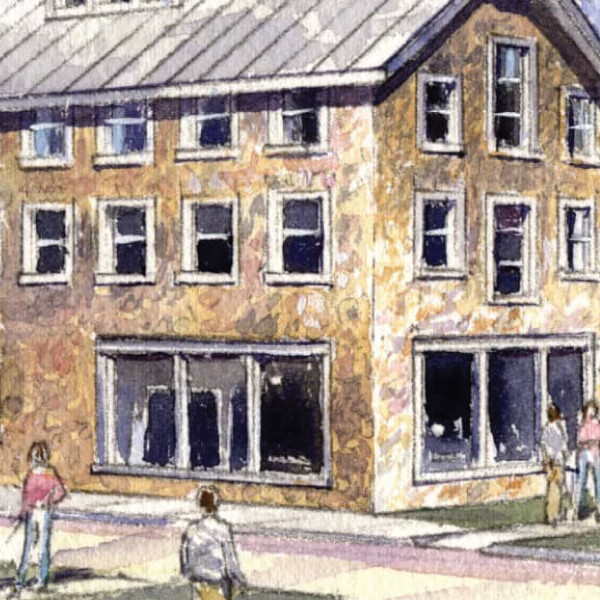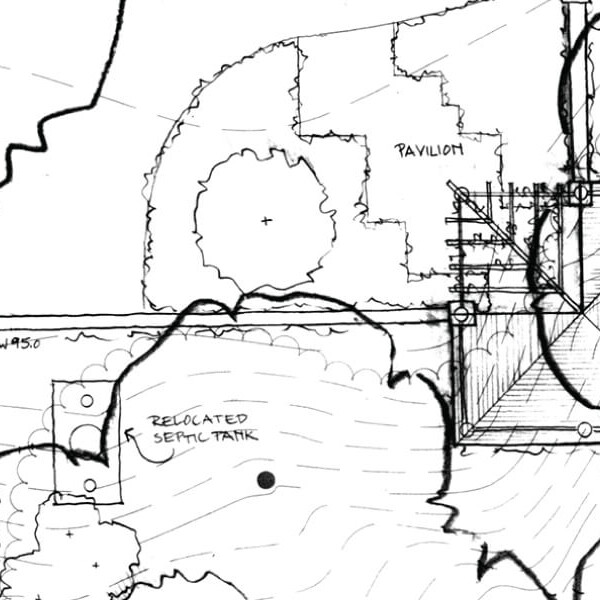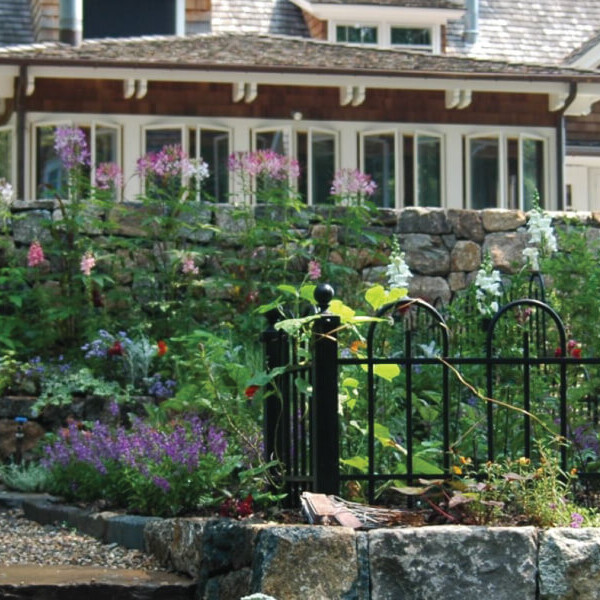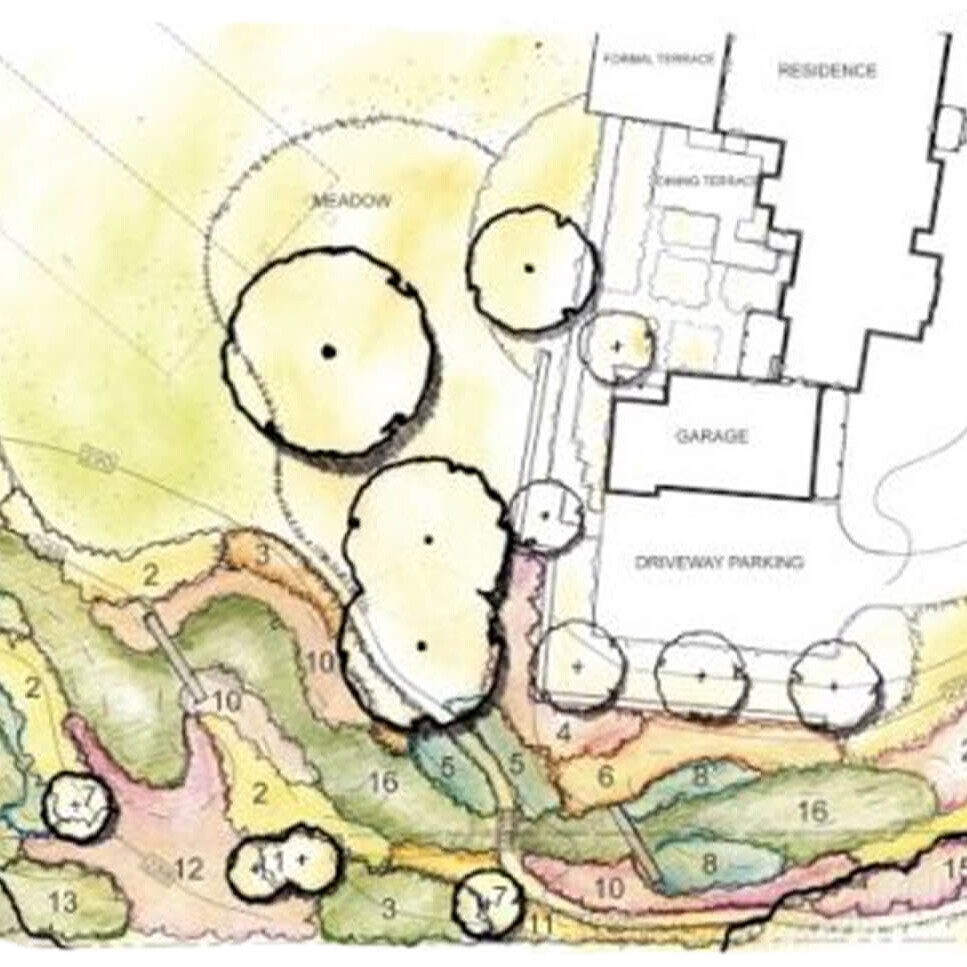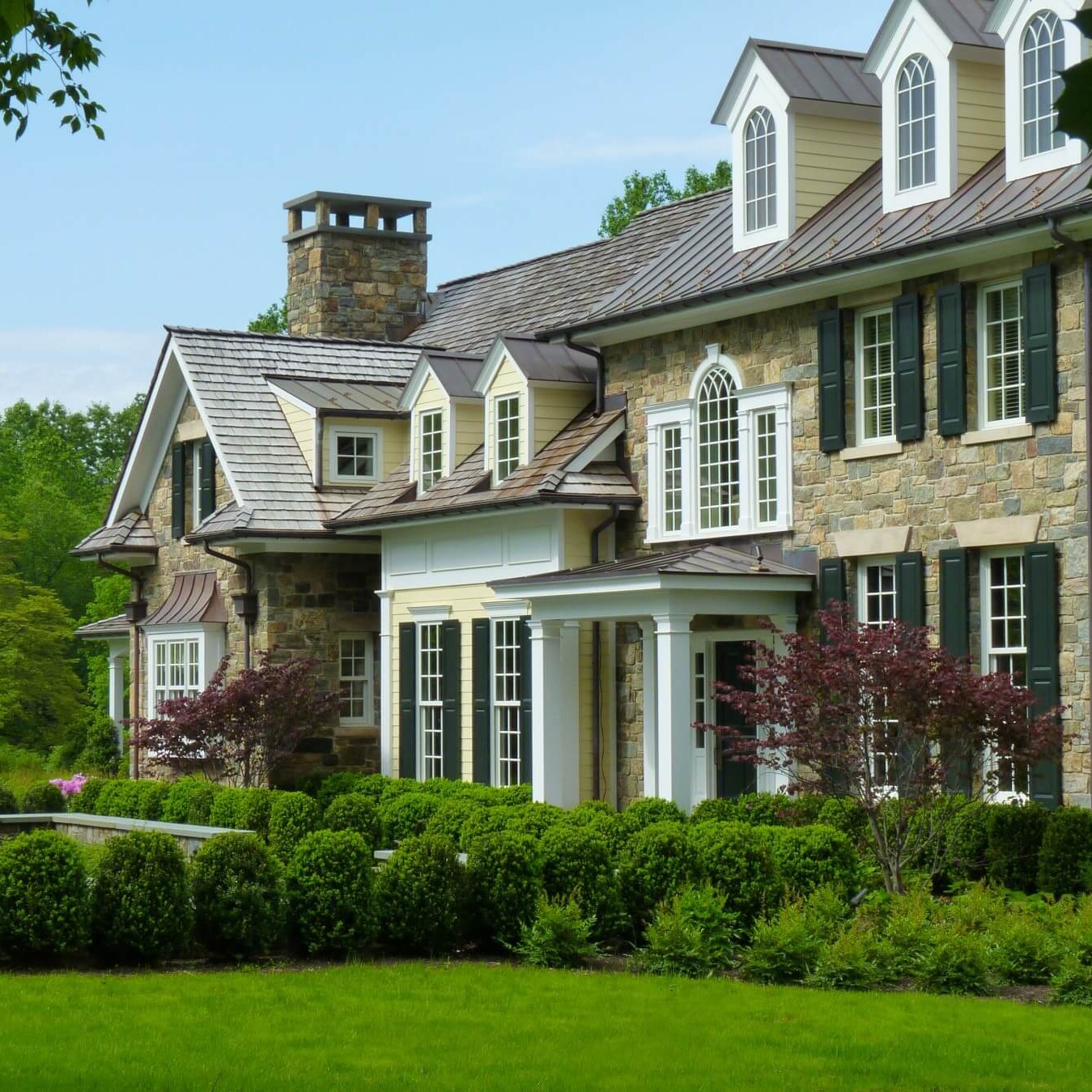Over 400 species of plants were incorporated throughout this
property. 85% of the plants are native to our region and benefit the environment. None of the non-native plants are considered invasive or pest.
Project Details
This suburban property in the Highlands of north central New Jersey offered a wealth of natural attributes and existing built elements that guided the landscape design: Rolling topography, mature shade trees, a house overlooking a large expanse of open land, a pool surrounded by undisturbed woodland, and a beautiful ‘borrowed’ view of a neighboring meadow. Yet several elements detracted from what could be a more environmentally friendly, year-round garden: Over four acres of lawn turf required hours of mowing and frequent chemical treatments, and monotonous foundation plantings had limited seasonal interest.
Inspired
Back to Nature’s design objective was to create several garden environments inspired by the home’s natural surroundings. We incorporated new perennial plantings in bold scales and textures year round to replace three acres of lawn. Once dull views along the driveway and from the house now evolve from season to season and the homeowner benefits from lower levels of maintenance. Because the home was located in an intensely developed community, we were very concerned about water quality and the effects of development on local habitat. We removed almost two-thirds of the impervious surfaces, such as driveways and unused terraces. We replaced turf with more water-quality friendly native wildflower meadows and large flowering trees.
Nature's Palette
The palette of plants used in this garden becomes increasingly bold and “wild” in form and color as you move away from the residence, climaxing in a completely wild ‘seeded’ meadow at the far edge of the property. We created continuous displays of color and texture using perennials with staggered flowering seasons and with ornamental grasses whose foliage brought color, texture and movement into the winter months.
Our clients can enjoy all the different parts of their garden through a series of mown paths through the meadow. So that they change their perspective on the garden, the layout of these paths can be changed by simply mowing through a different section of the meadow.
Over 400 different species of plants were incorporated throughout this property. Eighty-five percent of the plants are native to our region and benefit the environment. None of the non-native plants are considered invasive or pests. In total, we installed over 41,000 plants, the majority of them being ornamental grasses, perennials, and specimen flowering trees.
Maintenance Concerns
The clients recognized the value of regular maintenance as a means to protect their investment in the garden. Maintenance needs were discussed with the client during the design stage so that their expectations on time and cost were clear. Clearly, plants are always selected for important basic criteria: cold hardiness, heat/drought tolerance, no requirement for frequent deadheading or division, no need for staking. Few, if any, insect or disease problems are found in the garden. (Pest care is strictly organic—hand picking, natural predators, and organic remedies.) Plants do not require heavy fertilization.
Clients understand that while perennial plants are still filling in during the first year, the need for weeding will be greatest. An irrigation system is calibrated to apply about one-inch of water per week. Rain gauges monitor rainfall and turn off the system when it’s not needed.
Maintenance crews of three men spend on average 3-5 hours per week on weeding and other upkeep.
A yearly garden clean-up takes place in late February or early March before spring bulbs pop up. Perennials and grasses are cut down to the ground and debris is removed. Various mulches are applied as necessary to a depth of one to two inches—shredded hardwood mulch or a well-decayed compost, either of which will slowly decay over the course of the growing season and add to the organic content of the planting beds.
We created continuous displays of color and texture
using perennials with staggered flowering seasons and with ornamental grasses whose foliage brought color, texture and movement into the winter months.
Design Objectives
- Develop a landscape that looks like its been in for 100 years
- Use large sweeps of planting to provide texture to the garden
- Reduce turf grass to a minimum and plant native species meadows
- Use lawn paths to carry people thru the landscape
- Incorporate natural stone to provide antique look into the garden
- Avoid the use of curbs
- Vegetated drainage swales
- Improve the health of woodlands thru better management
- Use rain gardens to reduce run-off and improve ground recharge
- Landscape with plants that encourage wildlife forage for increased diversity of habitat




